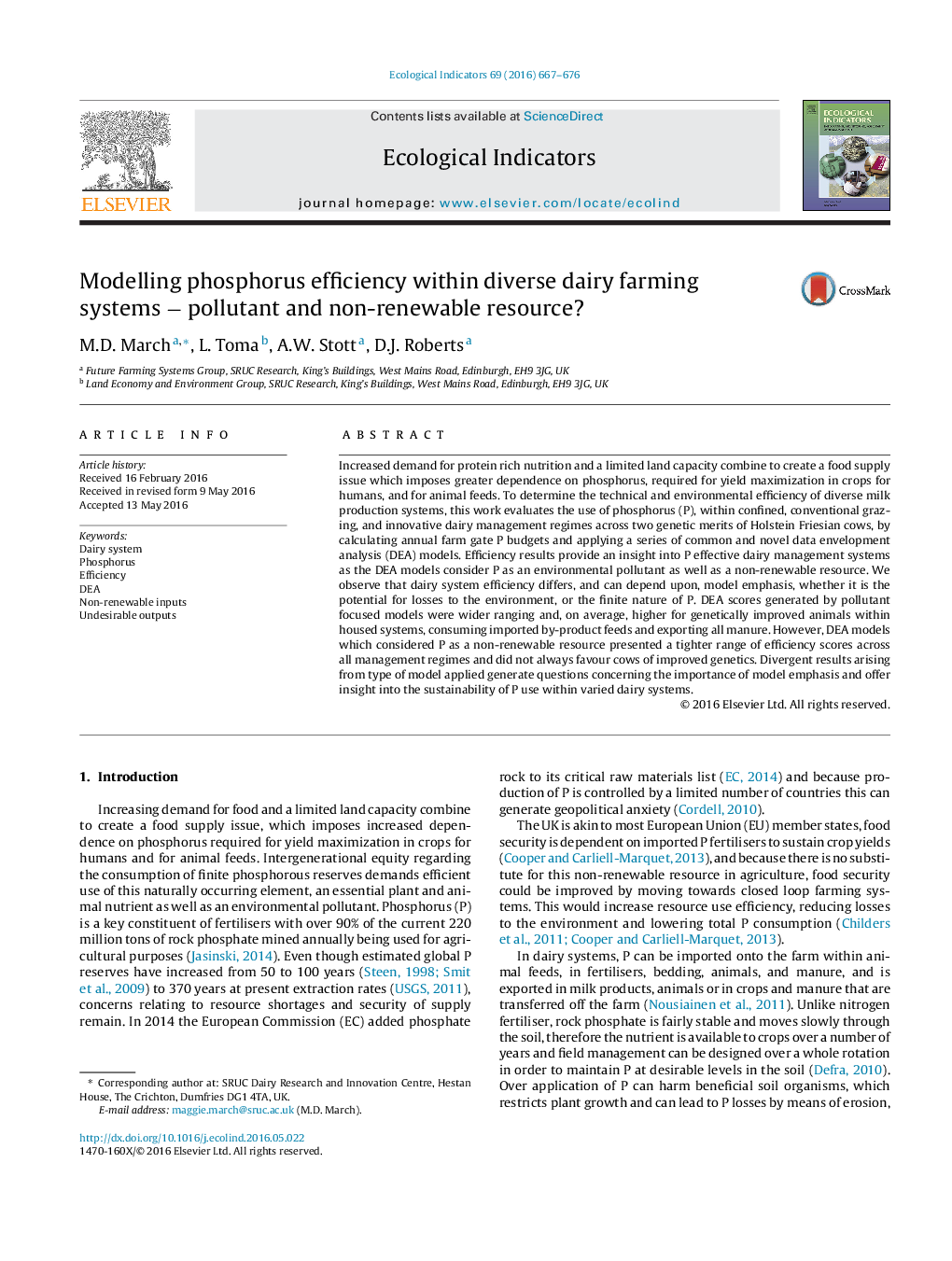| Article ID | Journal | Published Year | Pages | File Type |
|---|---|---|---|---|
| 6293317 | Ecological Indicators | 2016 | 10 Pages |
Abstract
Increased demand for protein rich nutrition and a limited land capacity combine to create a food supply issue which imposes greater dependence on phosphorus, required for yield maximization in crops for humans, and for animal feeds. To determine the technical and environmental efficiency of diverse milk production systems, this work evaluates the use of phosphorus (P), within confined, conventional grazing, and innovative dairy management regimes across two genetic merits of Holstein Friesian cows, by calculating annual farm gate P budgets and applying a series of common and novel data envelopment analysis (DEA) models. Efficiency results provide an insight into P effective dairy management systems as the DEA models consider P as an environmental pollutant as well as a non-renewable resource. We observe that dairy system efficiency differs, and can depend upon, model emphasis, whether it is the potential for losses to the environment, or the finite nature of P. DEA scores generated by pollutant focused models were wider ranging and, on average, higher for genetically improved animals within housed systems, consuming imported by-product feeds and exporting all manure. However, DEA models which considered P as a non-renewable resource presented a tighter range of efficiency scores across all management regimes and did not always favour cows of improved genetics. Divergent results arising from type of model applied generate questions concerning the importance of model emphasis and offer insight into the sustainability of P use within varied dairy systems.
Related Topics
Life Sciences
Agricultural and Biological Sciences
Ecology, Evolution, Behavior and Systematics
Authors
M.D. March, L. Toma, A.W. Stott, D.J. Roberts,
